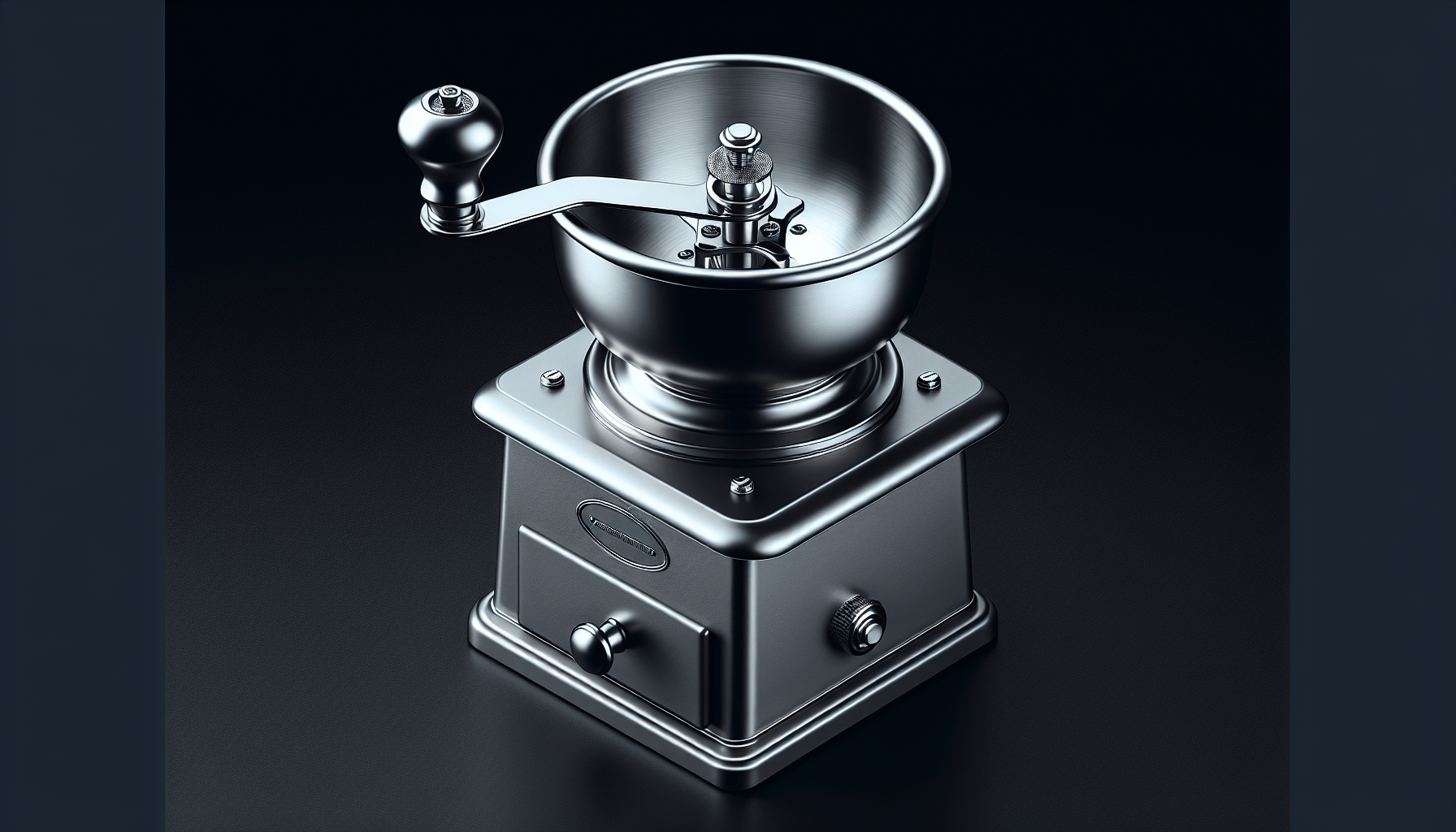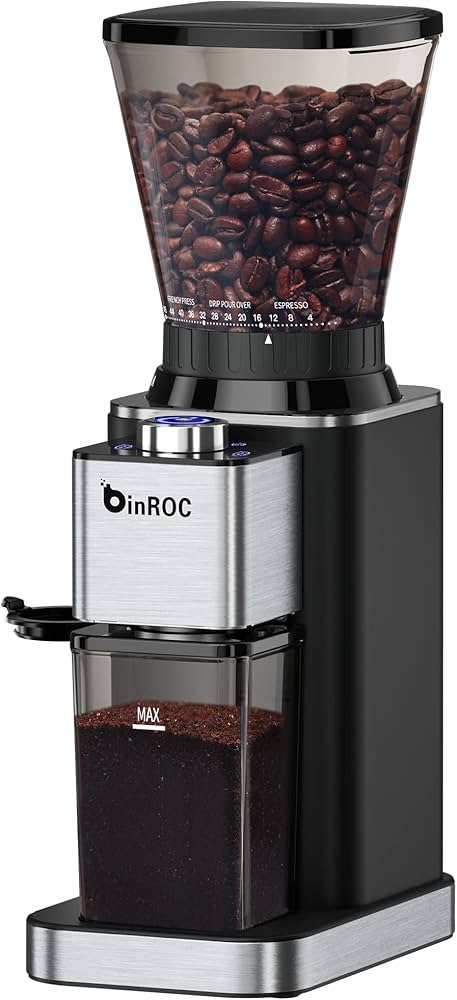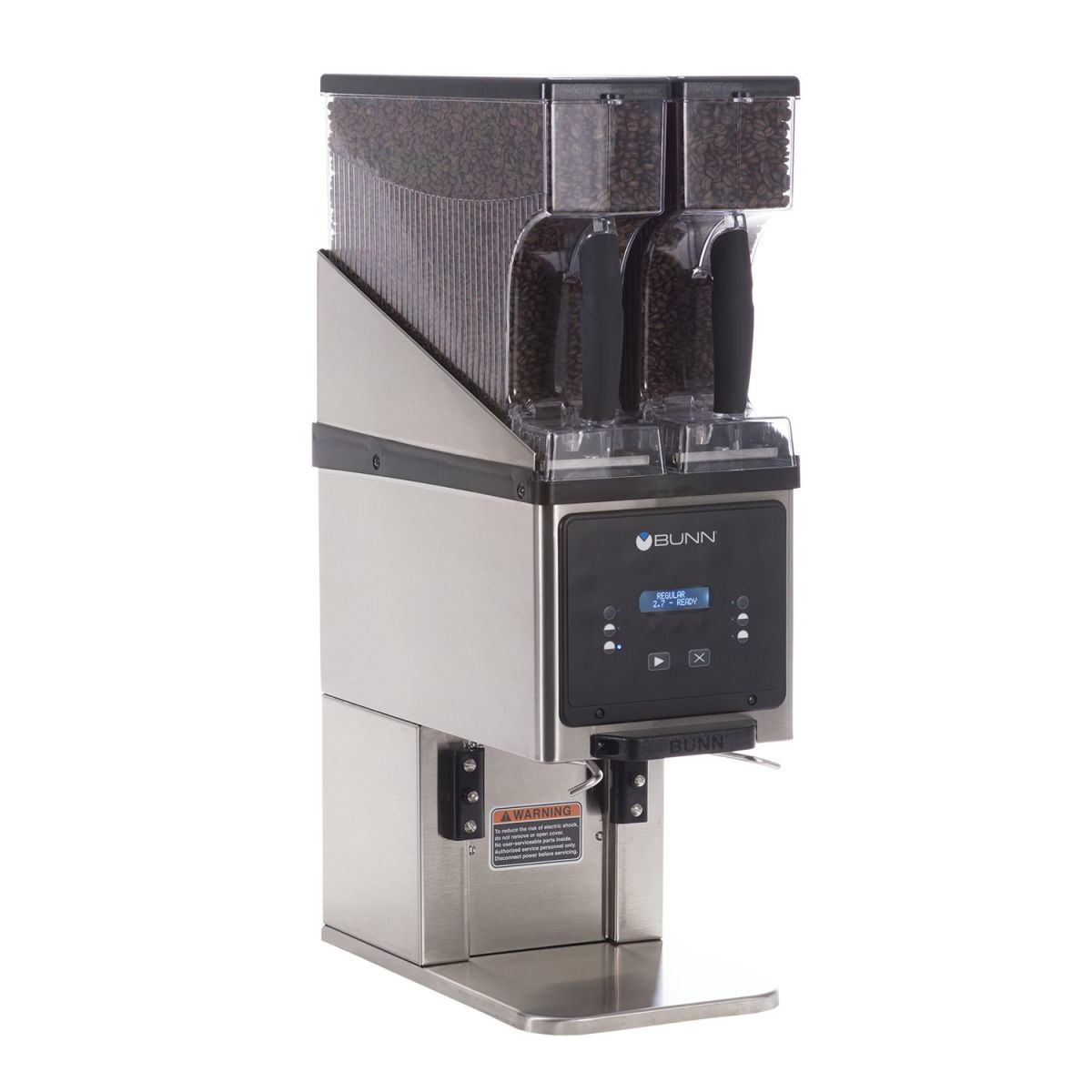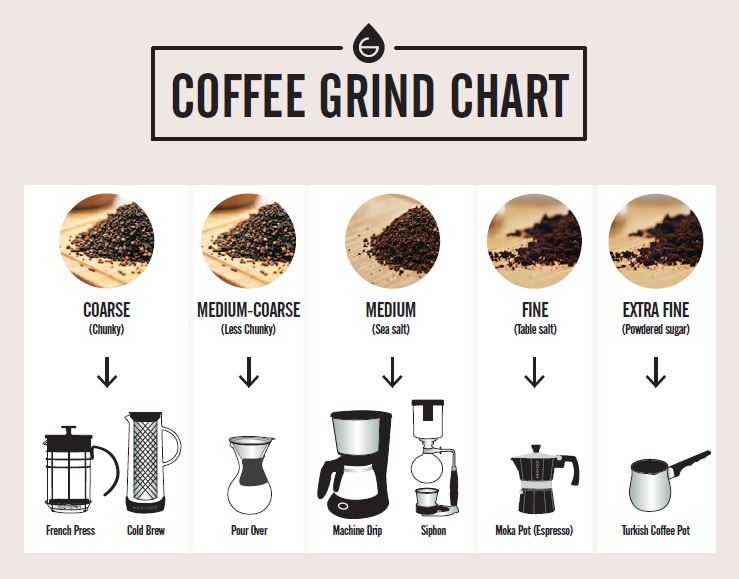You may have pondered at some point, while savoring the aroma of your freshly brewed cup of coffee, how long do coffee grinder machines typically last? As a coffee enthusiast, your trusty grinder has become an indispensable part of your morning routine, tirelessly transforming whole beans into the perfect grind. In this article, we will explore the lifespan of coffee grinder machines, shedding light on the factors that contribute to their longevity and helping you make an informed decision when it comes time to invest in a new one. So, grab your favorite mug, and let’s delve into the world of coffee grinders!
Factors affecting the lifespan of coffee grinders
Quality of materials
The quality of materials used in the construction of coffee grinders plays a significant role in determining their lifespan. Grinders made from durable and high-quality materials, such as stainless steel or ceramic, are more likely to withstand the wear and tear of daily use and last longer. On the other hand, grinders made from cheaper and less durable materials may break or deteriorate more quickly.
Frequency of use
The frequency at which you use your coffee grinder can also impact its lifespan. If you grind coffee beans multiple times a day, the machine will naturally experience more wear and tear compared to occasional use. Over time, the constant grinding can put stress on the motor, burrs, and other components, potentially shortening the grinder’s lifespan.
Maintenance and cleaning
Regular maintenance and cleaning are crucial for extending the lifespan of your coffee grinder. Neglecting to clean the grinder can lead to a buildup of coffee residue, oils, and other debris, which can affect the performance and longevity of the machine. Routine cleaning helps prevent clogging and maintains the grind quality. Additionally, proper maintenance, such as lubricating moving parts and replacing worn-out parts, can help ensure the grinder operates smoothly and efficiently.
Type of coffee beans used
The type of coffee beans used in the grinder can also impact its lifespan. Certain coffee beans, particularly those with high oil content or flavored beans, can leave residue in the grinder and cause clogging or damage to the burrs or blades. It is advisable to use high-quality coffee beans that are not overly oily and avoid flavored beans altogether. Using the right type of beans can minimize the risk of grinder issues and prolong its lifespan.
Average lifespan of coffee grinders
Entry-level models (under $50)
Entry-level coffee grinders, typically priced under $50, may have a shorter lifespan compared to higher-end models. These grinders often utilize lower-quality materials and have less robust construction. While some entry-level models can last for a few years with proper care, others may show signs of wear and performance decline sooner. It is important to manage expectations and consider upgrading to a higher-quality grinder if you are a frequent coffee grinder user.
Mid-range models ($50-200)
Mid-range coffee grinders, priced between $50 and $200, generally offer a better build quality and durability compared to entry-level models. With proper maintenance and care, these grinders can last anywhere from 3 to 5 years or even longer. The lifespan of a mid-range grinder often depends on factors such as frequency of use, cleaning routine, and overall build quality. Investing in a mid-range grinder can be a worthwhile decision for coffee enthusiasts looking for a balance between price and longevity.
Professional-grade models (over $200)
Professional-grade coffee grinders, typically priced over $200, are designed to withstand heavy use and offer superior performance. These grinders are constructed with high-quality materials, precision-engineered burrs or blades, and powerful motors. With proper maintenance, professional-grade coffee grinders can last for 5 years or more, making them a preferred choice for coffee shops, restaurants, or avid home baristas seeking longevity and reliability.
Signs that your coffee grinder may need replacement
Inconsistent grind size
One of the telltale signs that your coffee grinder may need replacing is inconsistent grind size. When the grinder fails to achieve a uniform grind consistently, it can adversely affect the extraction process and result in an uneven cup of coffee. If you notice that your grounds vary in size or have a mixture of fine and coarse particles, despite using the same grind setting, it may be time to consider replacing your grinder.
Excessive noise or vibrations
Unusual noise or excessive vibrations during grinding can indicate underlying issues with the coffee grinder. While some noise and vibrations are perfectly normal, consistent loud grinding noises or excessive shaking could be signs of worn-out components, misalignment, or an aging motor. If the noise or vibrations become disruptive or out of the ordinary, it may be necessary to replace your grinder to avoid further damage or safety hazards.
Clogging or jamming issues
Persistent clogging or frequent jamming of your coffee grinder can be frustrating and indicative of a faulty or aging machine. If the beans consistently get stuck, requiring frequent disassembly and cleaning, it may be a sign that the grinder is nearing the end of its lifespan. Additionally, if attempts to clear the clogs or jams prove ineffective, it may be more cost-effective to replace the grinder rather than invest in extensive repairs.
Worn-out burrs or blades
The burrs or blades are crucial components of a coffee grinder, responsible for grinding the beans to the desired consistency. Over time, these parts can become worn out or dull, resulting in a subpar grind quality. If you notice a significant decline in the grind performance, such as uneven or inconsistent grounds, it is likely that the burrs or blades are in need of replacement. While it is possible to replace these parts in some grinders, the overall condition of the machine should be taken into consideration.
Motor malfunction
The motor is the powerhouse of a coffee grinder, driving the grinding mechanism and ensuring smooth operation. If you experience frequent motor malfunctions, such as the grinder failing to start or suddenly stopping during use, it may be a clear indication that the motor is deteriorating. Motor issues can often be complex and costly to fix, making it more practical to replace the entire grinder, especially if it is an older model.
Tips to prolong the lifespan of your coffee grinder
Use high-quality coffee beans
Using high-quality coffee beans that are fresh and not overly oily can significantly extend the lifespan of your coffee grinder. Beans with excessive oil content can accumulate residue in the grinder, leading to clogs, increased friction, and ultimately, damage to the burrs or blades. Opt for freshly roasted beans from reputable sources, and avoid flavored beans or overly oily varieties.
Avoid grinding oily or flavored beans
As mentioned earlier, grinding oily or flavored beans can cause issues with your coffee grinder. The oils in these beans can coat the burrs or blades, making them less effective over time. Additionally, flavored beans often contain additional substances like syrups or extracts, which can stick to the grinder and cause clogs. To preserve the longevity of your grinder, stick to grinding non-flavored beans with moderate oil content.
Clean the grinder regularly
Regular cleaning is essential to keep your coffee grinder in optimal condition and extend its lifespan. Remove any residual coffee grounds, oils, or debris after each use to prevent buildup. Depending on the grinder’s design, you may need to disassemble certain components for a thorough clean. Refer to the manufacturer’s instructions for specific cleaning guidelines and frequency. Additionally, consider using cleaning pellets or tablets formulated specifically for coffee grinders to remove oils and residue from hard-to-reach areas.
Do not overload the hopper
To ensure the longevity of your grinder, avoid overloading the hopper with an excessive amount of coffee beans. Overloading can put unnecessary strain on the motor and cause the grinder to work harder than necessary. It is advisable to grind small batches of coffee beans at a time, allowing the grinder to operate more efficiently and reducing the risk of premature wear and tear.
Keep the burrs or blades sharp
Sharp burrs or blades are essential for achieving a consistent grind and prolonging the lifespan of your coffee grinder. As burrs or blades become dull over time, they can produce an uneven grind, increase motor strain, and reduce overall performance. Some grinders allow for burr or blade replacement, which is recommended after a certain period or when a noticeable decline in grind quality occurs. Keeping these critical parts sharp will ensure better extraction and enhance the grinder’s durability.
Importance of choosing a durable coffee grinder
Value for money
Investing in a durable coffee grinder offers long-term value for money. While it may be tempting to opt for a cheaper grinder, it is often associated with lower build quality and a shorter lifespan. A durable grinder, although initially more expensive, can last significantly longer, reducing the need for frequent replacements and potential repair costs. Over time, the cost of replacing multiple cheaper grinders may surpass the initial investment in a durable one.
Consistent grind quality
A durable coffee grinder is more likely to provide consistent grind quality throughout its lifespan. The precision construction and high-quality materials of a durable grinder contribute to an even grind size, essential for a balanced extraction and optimal flavor in your cup of coffee. Cheaper grinders may struggle to maintain consistency as parts wear down, compromising the overall coffee experience.
Reduced maintenance and repair costs
Choosing a durable coffee grinder can help minimize maintenance and repair costs in the long run. With proper care and maintenance, these grinders tend to experience fewer issues and require fewer repairs. Cheaper grinders, on the other hand, may be more prone to breakdowns or component failures, resulting in more frequent and costly repairs. By investing in a durable grinder, you can enjoy peace of mind and save on potential repair expenses.
When to consider upgrading to a new coffee grinder
Changes in coffee brewing preferences
If you experience a shift in your coffee brewing preferences, it may be a good time to consider upgrading to a new coffee grinder. Different brewing methods, such as espresso, pour-over, or French press, require specific grind sizes and consistencies. If your current grinder does not offer the flexibility or range to accommodate your desired brew style, upgrading to a grinder with more adjustable settings can enhance your coffee-making experience.
Desire for more advanced features
As your coffee journey evolves, you may develop an interest in exploring more advanced features or functionalities in a coffee grinder. Upgrading to a new grinder can provide access to innovative technologies, such as digital displays, programmable timers, or precision grind settings. These additional features can enhance convenience, consistency, and customization options, allowing you to further refine your coffee brewing process.
Increased frequency of use
If you find yourself using your coffee grinder more frequently due to a higher coffee consumption or hosting coffee gatherings, it may be time to upgrade to a grinder that can handle the increased workload. Upgrading to a more robust and durable grinder can help ensure longevity and performance under heavy daily use. Consider the capacity, motor power, and overall build quality when selecting a grinder suitable for increased frequency of use.
Comparing the lifespan of manual vs. electric coffee grinders
Factors affecting manual grinder lifespan
Manual coffee grinders, also known as hand grinders, typically have fewer moving parts and simpler mechanisms compared to electric grinders. As a result, manual grinders tend to have a longer lifespan. However, the lifespan of a manual grinder still depends on factors such as build quality, frequency of use, and proper maintenance. With regular cleaning, lubrication, and careful handling, a high-quality manual grinder can last for several years, if not longer.
Factors affecting electric grinder lifespan
Electric coffee grinders have more complex mechanisms, including motors, gears, and electronic components, which can affect their lifespan. The quality of these components, along with factors such as frequency of use, maintenance, and power supply, can influence how long an electric grinder lasts. Higher-end electric grinders with durable motors and well-constructed components generally have a longer lifespan compared to entry-level models. Regular maintenance, such as cleaning and lubricating, can further extend the lifespan of an electric grinder.
Pros and cons of each type
Manual grinders have the advantage of durability and portability. They can be taken on camping trips, used in areas without electricity, and tend to be more affordable. However, manual grinding can be time-consuming and require more effort, especially when grinding a large amount of coffee. Electric grinders, on the other hand, offer more convenience and speed, making them ideal for daily use or busy environments. However, they generally have a higher purchase price, require a power source, and may have a shorter lifespan due to the complexity of their design.
Common issues and troubleshooting for coffee grinders
Grinder not turning on
If your coffee grinder is not turning on, there could be a few possible causes. First, check if the power cord is properly plugged into an electrical outlet and ensure there is power at the outlet. If the power source is not the issue, check if there is a reset button or thermal safety switch that needs to be reset. Additionally, inspect the power switch or buttons on the grinder for any damage or malfunction. If none of these steps resolve the issue, it may be necessary to consult the manufacturer’s troubleshooting guide or seek professional repair.
Grinds too slowly
If your coffee grinder is grinding too slowly, it may be a sign of dull burrs or blades. Over time, these components can become worn out, leading to a decline in grinding performance. Cleaning the grinder and replacing the burrs or blades, if possible, may help improve grinding speed. However, if the issue persists, it could indicate motor issues or other mechanical problems that may require professional service or a replacement grinder.
Inconsistent grind size
Inconsistent grind size can be attributed to various factors, including dull burrs, misalignment, or grinding chamber clogs. To address this issue, start by cleaning the grinder thoroughly, paying attention to any clogs or residue buildup. If the grind inconsistency persists, it may be necessary to replace worn-out burrs or blades. Check the manufacturer’s guidelines for instructions on replacing these components or consult a professional if needed.
Overheating
Overheating of a coffee grinder can occur due to excessive use or prolonged grinding sessions. Some grinders are equipped with thermal safety switches that automatically shut off the grinder when it reaches a certain temperature to prevent damage. To avoid overheating, allow your grinder to cool down between grinding sessions, especially if using it for extended periods. If the overheating persists or the grinder shuts off frequently, consult the manufacturer’s instructions or seek professional assistance to address the issue.
Excessive static electricity
Coffee grinders, particularly electric ones, can generate static electricity during the grinding process. This static electricity can cause the coffee grounds to cling to the grinder’s chamber or other components, making it difficult to remove them completely. To reduce static electricity, consider using a grinder with anti-static features or add a small amount of water to the coffee beans before grinding. Additionally, using a brush or cloth to remove the grounds can help minimize static cling.
Cost-effective maintenance and repair tips for coffee grinders
Replacing worn-out parts
If your coffee grinder allows for the replacement of burrs, blades, or other worn-out parts, it can be a cost-effective way to extend its lifespan. Consult the manufacturer’s guidelines or contact their customer support for information on replacement parts and step-by-step instructions. By replacing the necessary components, you can restore the grinder’s performance and avoid the need for a complete replacement.
Using grinder cleaning tablets
Grinder cleaning tablets are specially formulated to remove coffee oils and residue from the grinder’s internal components. These tablets typically consist of food-safe cleaning agents that dissolve in water. Follow the manufacturer’s instructions or guidelines for the recommended frequency and dosage of cleaning tablets based on your grinder model. Regular use of cleaning tablets can enhance the grinder’s longevity and maintain optimal grind quality.
Lubricating moving parts
Lubricating the moving parts of your coffee grinder is essential for smooth operation and to reduce friction during grinding. Consult the manufacturer’s guidelines or instructions for the appropriate type of lubricant to use and the recommended frequency of lubrication. Applying lubrication to key areas, such as the burrs or blades, motor bearings, or any other moving components, can help prevent premature wear and ensure the grinder functions optimally.
Calibrating grind settings
If your coffee grinder has adjustable grind settings, periodic calibration can help maintain consistent grind size and performance. Over time, vibrations, wear and tear, or accidental adjustment of the settings can result in inconsistencies. Carefully follow the manufacturer’s recommended calibration procedure to reset and fine-tune the grind settings. Regular calibration can optimize the grinder’s performance and extend its lifespan.
Conclusion
Coffee grinders can last for a range of time depending on various factors, including the quality of materials, frequency of use, maintenance and cleaning routine, and the type of coffee beans used. Entry-level models, while more affordable, may have a shorter lifespan compared to mid-range or professional-grade grinders. It is important to be aware of the signs that your coffee grinder may need replacement, such as inconsistent grind size, excessive noise or vibrations, clogging or jamming issues, worn-out burrs or blades, and motor malfunction.
To prolong the lifespan of your coffee grinder, it is recommended to use high-quality coffee beans, avoid grinding oily or flavored beans, clean the grinder regularly, avoid overloading the hopper, and keep the burrs or blades sharp. Choosing a durable coffee grinder offers value for money, consistent grind quality, and reduced maintenance and repair costs. If your coffee brewing preferences change, you desire more advanced features, or your frequency of use increases, considering an upgrade to a new coffee grinder may be beneficial.
The lifespan of manual grinders tends to be longer due to their simpler mechanisms and fewer moving parts. Electric grinders, although more convenient, may have a shorter lifespan due to the complexity of their design. It is important to be familiar with common issues that may arise with coffee grinders, such as grinder not turning on, slow grinding, inconsistent grind size, overheating, and excessive static electricity. Cost-effective maintenance and repair tips, such as replacing worn-out parts, using grinder cleaning tablets, lubricating moving parts, and calibrating grind settings, can help extend the lifespan of your coffee grinder and ensure its optimal performance.




